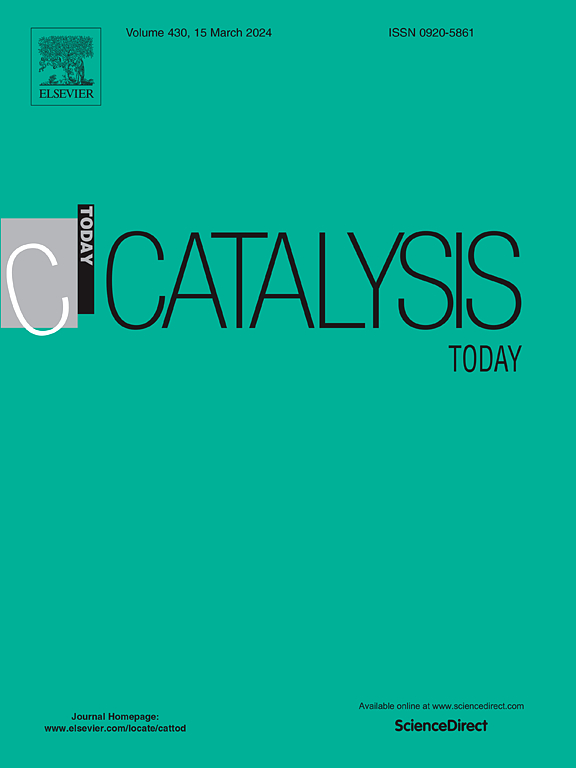Mg/ zr掺杂Ta3N5中增强光催化析氢的原子尺度机制
IF 5.2
2区 化学
Q1 CHEMISTRY, APPLIED
引用次数: 0
摘要
在Ta3N5中共掺杂Mg-Zr抑制了固有缺陷,显著提高了水裂解光催化制氢性能。然而,Mg/Zr掺杂剂与载流子分离、Pt共催化剂分散和表面反应之间的微观机制尚不清楚。本文利用第一性原理计算,阐明了Mg和Zr在提高Ta3N5水裂解析氢光催化性能中的单独和协同作用。Mg和Zr的掺杂有利于载流子分离,通过电荷补偿补偿了固有缺陷,提高了载流子浓度。关键是,Mg与氧杂质的耦合调节了表面电子结构,促进了Pt的色散,而Zr与氧杂质的耦合改变了Pt的单原子电子态,降低了析氢反应的能垒。Mg-Zr共掺杂与氧杂质的协同作用使析氢速率最大化。这项工作解决了关于Ta3N5中Mg/Zr掺杂机理的争论,为高效稳定的光催化体系提供了理论见解和设计原则。本文章由计算机程序翻译,如有差异,请以英文原文为准。
Atomic-scale mechanisms of enhanced photocatalytic hydrogen evolution in Mg/Zr-doped Ta3N5
Mg-Zr co-doping in Ta3N5 suppresses intrinsic defects, significantly enhancing the photocatalytic hydrogen production performance via water splitting. However, the microscopic mechanisms linking Mg/Zr dopants to carrier separation, Pt co-catalyst dispersion, and surface reactions remain unclear. Here, using first-principles calculations, we elucidate the individual and synergistic roles of Mg and Zr in improving the photocatalytic performance of Ta3N5 for hydrogen evolution from water splitting. Mg and Zr doping facilitates carrier separation, compensates for intrinsic defects through charge compensation, and increases carrier concentration. Critically, the coupling of Mg with oxygen impurities modulates the surface electronic structure, promoting Pt dispersion, while Zr coupling with oxygen impurities modifies Pt single-atom electronic states, reducing the hydrogen evolution reaction energy barrier. The synergy between Mg-Zr co-doping and oxygen impurities maximizes the hydrogen evolution rate. This work resolves the debate on the mechanisms of Mg/Zr doping in Ta3N5, providing theoretical insights and design principles for efficient and stable photocatalytic systems.
求助全文
通过发布文献求助,成功后即可免费获取论文全文。
去求助
来源期刊

Catalysis Today
化学-工程:化工
CiteScore
11.50
自引率
3.80%
发文量
573
审稿时长
2.9 months
期刊介绍:
Catalysis Today focuses on the rapid publication of original invited papers devoted to currently important topics in catalysis and related subjects. The journal only publishes special issues (Proposing a Catalysis Today Special Issue), each of which is supervised by Guest Editors who recruit individual papers and oversee the peer review process. Catalysis Today offers researchers in the field of catalysis in-depth overviews of topical issues.
Both fundamental and applied aspects of catalysis are covered. Subjects such as catalysis of immobilized organometallic and biocatalytic systems are welcome. Subjects related to catalysis such as experimental techniques, adsorption, process technology, synthesis, in situ characterization, computational, theoretical modeling, imaging and others are included if there is a clear relationship to catalysis.
 求助内容:
求助内容: 应助结果提醒方式:
应助结果提醒方式:


